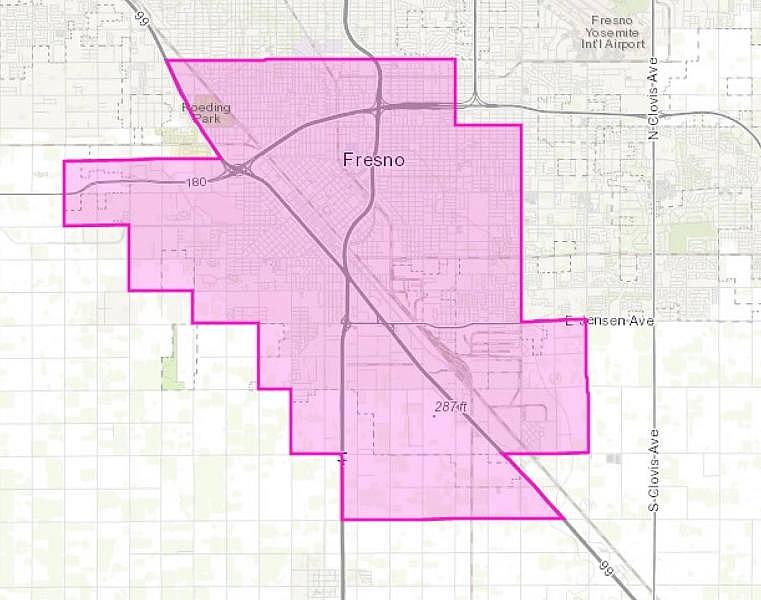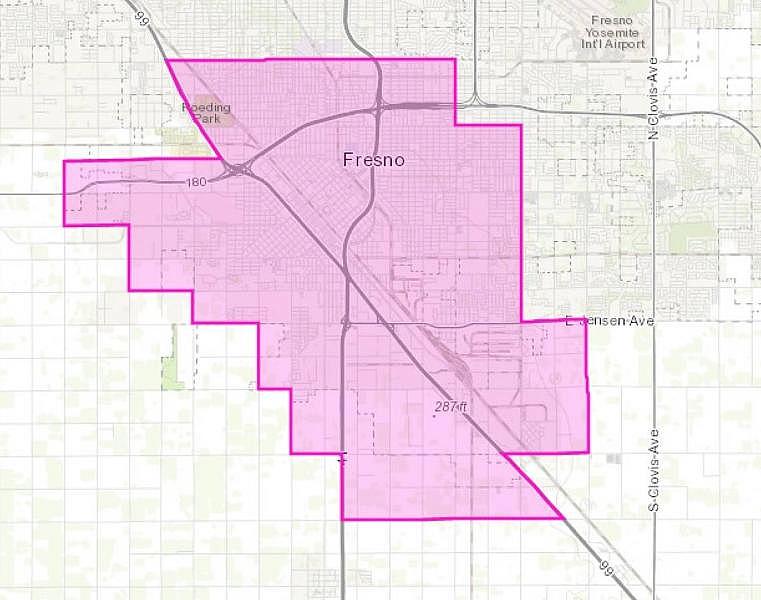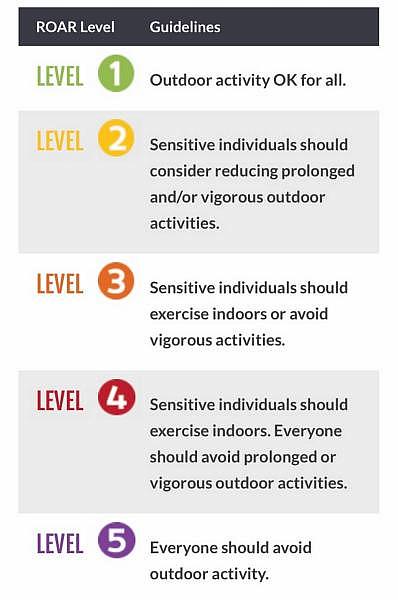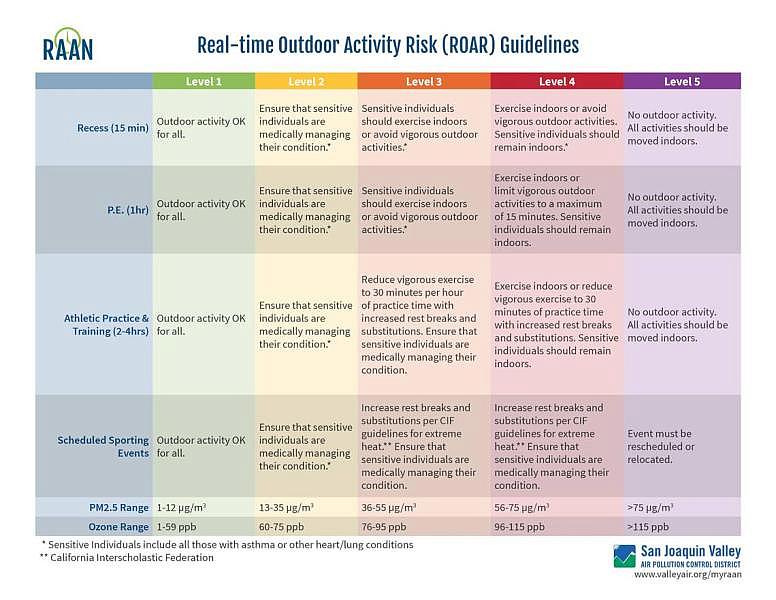Do you live or work in south Fresno? Here’s what you need to know about air quality
Reporter Monica Vaughan contributed to this story with support from USC Annenberg’s Center for Health Journalism 2022 California Impact Fund.
Other stories include:
Do you live in south Fresno? Help us investigate trucks and air pollution
Hazardous waste site to open in this Fresno neighborhood. Is it a ‘necessary evil?’

A local health researcher gives tips on how to protect you and your family when the air quality is unhealthy.
By Nathalie Vera, Brianna Vaccari, Monica Vaughan
If you live on the south side of Fresno, you are likely exposed to multiple sources of air pollution that can harm your health — and the hot summer days can increase the risk.
Frequent coughing and congestion, chronic illnesses like asthma, and even premature death are associated with the kind of air pollution residents are regularly exposed to in Fresno, south of Highway 180, and in Calwa and Malaga. Children, seniors, and people with respiratory and cardiovascular illnesses are especially at risk.
“It’s getting worse every year with this heat, and pollution is not getting any better,” said Malik Baz, head doctor at Baz Allergy, Asthma, and Sinus Centers. Most of his patients are from south Fresno, he said.
There are things you can do to reduce the risk of irritation and damage to your and your family’s lungs. You can sign up to receive air quality alerts or check the air quality before going outside. When the air is bad, limit physical activity or stay indoors with the windows closed and turn on an air filter. To improve indoor air quality, consider removing carpets and drapes, and never smoke inside.
Keeping an eye on air quality in your community is an important tool for managing asthma and other health issues.
“I’m not sure parents really understand how closely linked air quality and asthma are,” said Carmela Sosa, a complex care pediatrician at Valley Children’s Hospital.
Asthma is common in the San Joaquin Valley, and it may be mistaken for allergies. If you or someone experiences frequent coughing or wheezing, consider seeing a doctor to find out if there is a more serious problem and if treatment is available. If your child is struggling to breathe, get them to a hospital.
WHY IS THE AIR QUALITY BAD IN SOUTH FRESNO?
While Fresno has some of the worst air quality in the country, residents in south Fresno, Calwa, and Malaga are particularly at risk for harmful health effects because of regular exposure to nearby sources of pollution. The area is disproportionately impacted by air pollution, according to the San Joaquin Valley Air District.
Traffic on nearby freeways, heavy diesel truck traffic next to homes and schools, multiple industrial facilities, and dust from agriculture processing facilities all contribute to harmful air pollution like particulate matter and ozone.
A lack of vegetation and trees in these neighborhoods contributes to the problem, and high heat traps air pollution like ozone close to the ground. That’s why summer can increase the risk of health effects from ozone.

WHAT ARE THE HEALTH RISKS OF LIVING IN BAD AIR QUALITY?
Particulate matter — or PM for short — contains tiny particles in the air that can be inhaled deep into the lungs and can damage your respiratory system.
Constant exposure to this kind of air pollution in your community “does end up leading to long-term problems in the lungs and in the heart,” said Tania Pacheco-Werner, a health researcher and co-director of Central Valley Health Policy Institute. “We’ve seen that children and the elderly end up sort of bearing the brunt of the effects of this type of exposure.”
Children have a higher risk of health effects because they are active outside for longer periods of time than most adults and because their lungs are still developing.
Exposure to increased particulate matter correlates with an increase in asthma attacks, bronchitis, chronic cough and even heart attacks. Some research found PM exposure makes allergy symptoms worse. Exposure to air pollution can even affect lung development in babies.
Ground-level ozone happens when pollution from cars, trucks and industrial facilities chemically reacts in sunlight. It’s often worse in urban areas on hot days, according to the Environmental Protection Agency. Unhealthy levels of ozone can irritate the throat, damage the airways, make lungs more susceptible to infection and increase symptoms from lung diseases like asthma.
A multi-year study of children with asthma in Fresno found that pollution from traffic emissions was associated with increased symptoms, like wheezing.
Diesel truck emissions are another concern. Heavy-duty diesel trucks emit toxic air pollution that can cause increased risk of cancer and respiratory illness in nearby neighborhoods, according to Tim Tyner, an environmental health researcher and co-executive director of the Central California Asthma Collaborative.. Exposure is also correlated to preterm birth and emergency room visits and hospitalizations for asthma.
“It’s about that long term exposure… not just that you pass by trucks every once in a while,” Pacheco-Werner said. “It’s that idea of day in and day out, all of your daily activity being connected to an area where these types of concentrations seem to be higher than in other places, and that there’s not much around to protect you from that.”
HOW TO KNOW WHEN THE AIR QUALITY IS GOOD
When you see a thick haze on the horizon, that means there is air pollution in the air you are breathing. If it smells dusty or smoky outside, the air quality might not be healthy.
Air quality monitors in your community help report how good or bad the air is at that moment to help you make informed decisions for you and your family’s health. Here are some options:
- Check the air quality in your neighborhood right now using the Purple Air Monitor map available here.
- Use your smartphone to check your weather app, or search “Calwa air quality” to see quick and immediate air quality conditions.
- Sign up to receive text message or email alerts about air quality using the San Joaquin Valley Air District’s advisory network.
A color-coded Real-time Outdoor Activity Risk provides guidelines for what to do when the air quality is less than good. Sensitive individuals can include children, seniors and people with existing respiratory issues like asthma. Screenshot San Joaquin Valley Air District
HOW TO PROTECT YOUR FAMILY’S HEALTH
When the air quality is bad, public health officials recommend that you avoid strenuous outdoor activity, stay indoors and close all the windows and doors. Turn on any air filters and set any air conditioning unit to recycle indoor air. People with existing respiratory illnesses should consider leaving the area.
Most air quality tools provide a color coded guide to how bad the air is, ranging from green indicating the air quality is good, to purple, indicating the air quality is hazardous or dangerous for everyone. Public health officials offer a guide to alter activity based on the color.
- Green: Outdoor activity OK for all.
- Yellow: Sensitive individuals should consider reducing prolonged and/or vigorous outdoor activities.
- Orange: Sensitive individuals should exercise indoors or avoid vigorous activities.
- Red: Sensitive individuals should exercise indoors.
- Purple: Everyone should avoid prolonged or vigorous outdoor activities.
If your job prevents you from staying indoors when the air quality is bad, consider using an N95 mask approved by the National Institute for Occupational Safety and Health. These masks will not help you if they are not fitted properly.
Most air quality tools provide a color coded guide to how bad the air is, ranging from green indicating the air quality is good, to purple, indicating the air quality is hazardous or dangerous for everyone. Public health officials offer a guide to alter activity based on the color. Screenshot San Joaquin Valley Air District
WHAT ARE SYMPTOMS OF ASTHMA?
Some parents may mistake asthma symptoms for allergies or congestion. South Fresno has among the highest rates of hospitalizations for asthma in the state, according to CalEnviroScreen, a tool that analyses community pollution burdens.
The National Heart, Blood, and Lung Institute defines asthma as a long-term condition that affects the airways in the lungs. If you have asthma, the airways can become inflamed and narrowed, making it harder for air to flow out of your airways when you breathe out.
“The classic symptom of asthma is actually wheezing,” Sosa said. “It’s a high-pitched noise that you make when you breathe out.”
Other symptoms include cough, shortness of breath while exercising, a nighttime cough, and chest pain. Using regular medications for asthma can help control symptoms.
“Breathing is a very passive process. It does not take a lot of effort,” Sosa said. “When you notice someone pulling or tugging to breathe, that means they’re having a lot of trouble getting air in.”
If your child is struggling to breathe in, and you see them using extra muscles in their chest or neck, that’s a sign “that someone is in pretty significant distress and should go to the hospital right away,” she said.
WANT TO KNOW MORE?
Do you have questions? Want to share your experience with bad air? We want to hear from you!
Text us at 559-777-9183 or email sfresnoair@gmail.com.
Monica Vaughan is a freelance journalist based in Fresno. She can be reached at monicalvaughan@gmail.com.
Nathalie Vera is a journalist withKSEE24 | CBS 47 in Frseno. She can be reached at nvera@ksee.com.
This project is supported by a grant from USC Annenberg’s Center for Health Journalism 2022 California Impact Fund.
[This article was originally published by The Fresno Bee.]
Did you like this story? Your support means a lot! Your tax-deductible donation will advance our mission of supporting journalism as a catalyst for change.

